3D Printing Simulation (Part 2)
Last month we took a look at what is currently being offered in terms of additive manufacturing simulation.
Due to the sheer number of companies that are developing solutions in this field, we could only feature a fraction of them in our previous article.
So, to conclude this topic, and to give you, the reader, a more complete overview of what is currently available for your 3D printing simulation needs, here is the second and final part of our series on additive manufacturing simulation.
As with the previous article, we spoke to five different companies and asked them to give us the lowdown on their individual solutions. For this article, we’ll explore contributions from Materialise, Siemens, e-Xstream, Dassault Systèmes and COMSOL.
![]() Materialise
Materialise
First up, we contacted Materialise, which is an old hand in the world of 3D printing, having provided print data preparation software Magics to customers for decades.
We spoke to Manuel Michiels, market innovation manager for software at Materialise to see what the company is bringing to the world of additive manufacturing simulation.
“Materialise Magics is the de facto standard for build preparation in Metal 3D Printing,” said Michiels.
“With this release, we’ve launched the Magics Simulation module. As a fully embedded and integrated module in the existing software, it allows our customers to bring simulation to the production floor, allowing them to include simulation in their workflow seamlessly without having to switch software packages.”
Indeed, the lack of interoperability between software file types when dealing with modeling and simulation is the bane of engineers everywhere.

Magics Simulation Module (Image courtesy of Materialise.)
“Focused on Metal printing,” continued Michiels, “the simulation module features a mechanical inherent strain method based on Simufact Technology, including calibration of the strains [and a] simulation job management system to keep an overview.
“[It also features] seamlessly integrated visualization tools such as (counter-) deformation, shrink lines and recoater collisions, [and the] ability to adjust supports based on simulation results.”
In terms of innovation, Materialise has a few plans on the horizon to keep it competitive with the other companies involved with 3D printing simulation.
“[We plan on] further using simulation to automatically boost manufacturing workflows like optimizing support structures, orientation, slicing… thus helping our customers using their machines to the maximum capacity.” said Michiels.
And what exactly is it that Materialise offers that is different from the aforementioned competitors in the field?
“It’s a fully integrated simulation workflow inside of Materialise’s Magics,” said Michiels. “Bringing simulation to the production floor in an easy-to-use way instead of having to switch to dedicated simulation packages.”
Last month we asked each company how accurate their simulations were, and what were the main sources of variance between the simulation process and the finished part. It’s easy enough for them to give us the marketing spiel…we want to know the limitations of the software, too!
In order to maintain consistency and give all participants the chance to get their messages across, we asked the five companies that replied those exact same questions this month.
“[The] tendencies of deformation, support failure … are already captured in a couple of minutes of calculation,” replied Michiels. “For the more detailed analysis, a user runs a calibration procedure and a more detailed simulation calculation, resulting in accuracies reaching easily > 90.
“The user is able to define the level of detail of simulation himself,” he continued. “Either running a fast and course simulation or a more thorough analysis, which results automatically in a higher accuracy.”
“Next to this, the user is able to choose from default inherent strains for his AM machine or use the calibration procedure to get a more accurate grip on the behavior of his machine.
“Local thermal problems are not captured yet in this release,” Michiels added. “We plan to release thermal-related build distortions in the future as well.”
![]() Siemens
Siemens
Siemens is very much firmly embedded in the digital manufacturing landscape, with products spanning the entire product lifecycle, so it’s no surprise that the company is proactive in pushing additive manufacturing simulation into engineers’ workflows.
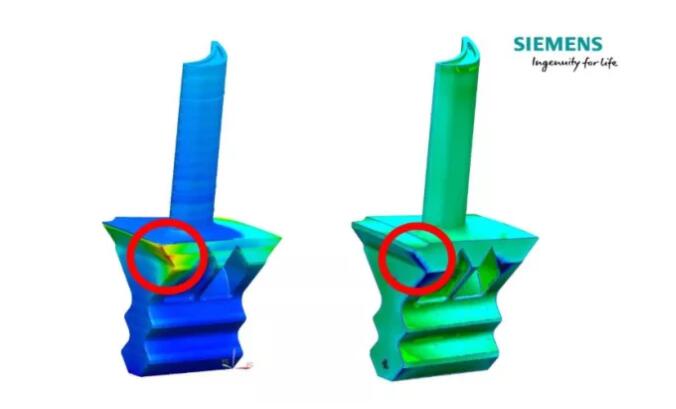
This image shows concurrence between the predicted distortion from a print (on the left) and a deviation comparison between the original CAD model and a 3D scan of the actual printed blade (on the right). (Image courtesy of Siemens.)
We spoke with Ashley Eckhoff, marketing manager, Manufacturing Engineering Software, at Siemens to see what’s going on, and what the company has coming up in the future.
“As more companies and industries adopt additive manufacturing as part of their production workflow, achieving a “first-time-right” print becomes increasingly important,” explained Eckhoff.
“Currently, it can take three to five attempts to perfect a metal print job. To achieve industrial printing at scale, we need to target a first-time-right print.”
The concept of right-first-time printing is obviously of vital importance to high-end manufacturing companies that wish to use metal additive manufacturing. Metal printers and the feedstock used or printing are extremely expensive—there isn’t much room for error or rework from an economic standpoint.
“For first-time-right printing, it is important to simulate the build process for the entire build tray, including support structures,” said Eckhoff.
“Simulating the entire build tray allows for simulation of thermal interaction between parts, support structures and residual powder in the build tray. Furthermore, it is also important to consider the geometric adjustments to the design and supports necessary for counteracting thermal distortion incurred during the build process.”
So, what is unique about Siemens’ approach to bringing additive manufacturing simulation to the masses?
“Siemens has chosen to take a pragmatic approach where the simulation is based upon a hybrid microstructure data set that combines computed and empirical information,” continued Eckhoff.
“This novel hybrid approach enables calibration of the process for continuous improvement of the simulation results. Siemens also sees high value in automating the interaction between design, simulation and manufacturing to minimize the effort to produce models that print first-time-right.”
On the topic of simulation accuracy and variance, Siemens is still working on this, as the additive manufacturing simulation module is still relatively new.
“At Siemens, we are working intensively with early adopter customers to test the accuracy of our process simulation process,” said Eckhoff.
“The feedback we are getting is helping us [to] tune the quality and accuracy of our simulation results.
“The accuracy of a process simulation solution depends highly on the accuracy of the meshes input to the simulation.We are performing advanced mesh sensitivity studies with a goal of minimizing the effort required to get to a first-time-right print.”
And, finally, what does the future hold for Siemens in terms of additive manufacturing simulation innovation?
“Siemens is researching how to use simulation to counteract distortion by recognizing regions of local overheating and adjusting the print process in those regions,” concluded Eckhoff.
“Siemens is working to develop process simulation for plastics as well as DED and jetting processes.”
![]() e-Xstream / MSC
e-Xstream / MSC
e-Xstream was founded in 2003 as a spin-off of Université Catholique de Louvain, and was acquired by MSC Software Corporation in 2013. In that time, the company has become experts in the field of multiscale modeling of composite materials and structures. In recent times, it has expanded that expertise into the domain of 3D printing simulation, and now has a portfolio of customers representing all aspects of high-end manufacturing.
e-Xstream is also one of the few companies that we spoke to that has a product that is 100 percent focused on polymer and composite printing processes.
We spoke to Olivier Lietaer, business development engineer for Additive Manufacturing at e-Xstream to see what the company has to add to the discussion.
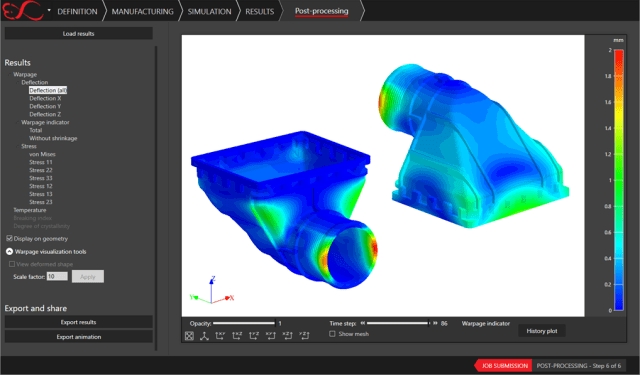
Warpage analysis in Digimat-AM. (Image courtesy of e-Xstream/MSC.)
“Based on its Digimat material modeling technology and MSC Finite Element technology, e-Xstream engineering has developed an integrative solution for additive manufacturing with a unique combination of material engineering, process simulation and structural engineering to address the [following] AM industry key challenges,” said Lietaer.
“Firstly, in the area of materials, e-Xstream is extending its material engineering tools (Digimat-MF and Digimat-FE) to enable virtual compounding of new AM materials and simulate the as-printed material behavior. Advanced material models taking the process anisotropy into account are then built, stored and promoted via Digimat-MX material exchange database. Thanks to these tools, users can significantly reduce physical tests, understand key parameters driving the material behavior, and easily create new material systems, such as lightweight lattices.
“In terms of process: Digimat-AM is a new software solution that has been developed to print right the first time by simulating the FDM and SLS processes of reinforced materials. Digimat-AM helps anticipate printing issues, predicting warpage and compensating distortion. Process simulation is a key enabler for engineers to better understand and optimize the process settings by evaluating their effect on part warpage.
“And in terms of performance: e-Xstream is extending its Digimat-RP structural analysis solution to enable engineers to validate their design by predicting the printed part performance (stiffness, strength, …) as a function of the material and the printing setup, such as toolpath or build direction. The improved accuracy provided by Digimat simulation makes it possible to reduce weight, cost and time to market while reducing material testing and prototyping requirements.
“In summary,” continued Lietaer,“most of the Digimat material modeling platform has been largely extended to support AM materials and manufacturing data and offer simulation tools that replicate the traditional engineering workflow to optimize materials, printers and parts in a fraction of the time and cost of the traditional build and test method.”
In terms of the features of Digimat AM, e-Xstream told us that its software emulated the real-life printing workflow, took into account process settings and material parameters, and made use of MSC’s own nonlinear finite element analysis (FEA) solver, MSC MARC. Additionally, e-Xstream is clearly aiming to make its products accessible to a wide range of users.
“Our workflow, supported by a user-friendly GUI, is clearly not intended for FEA experts only. By leveraging from multiscale material modeling techniques and the inherent strain approach, Digimat-AM offers a fast solution to the process simulation. Since our last release (Digimat 2018.1), a new solver proposes fully coupled thermo-mechanical simulation for more advanced analysis and highest accuracy, along with a crystallinity kinetics module. Process engineers are now fully armed to understand and optimize their manufacturing settings!”
What makes Digimat AM unique in this particular software domain? What can e-Xstream do that nobody else can?
“e-Xstream Engineering is the Material Modeling Company. Digimat is the result of 15 years of collaborative R&D work done on multiscale modeling and nonlinear micromechanics with universities and research centers and based on partnerships with key actors of the industry. Consequently, dealing with reinforced materials and advanced material models for AM is just the logical continuation of our previous developments (e.g., injection molding). To us, ‘filled’ is the natural state of polymers.
“With more than 270 grades and 14 500 Digimat material models, Digimat owns the largest composite material models database, Digimat-MX, used as a marketplace between material suppliers and end users. This database is currently being filled with off-the-shelf material and printer models specifically for AM, with high-performance grades such as Solvay KetaSpire PEEK (FFF), Stratasys ULTEM9085 and 1010 (FDM), or Solvay Sinterline powders (SLS).”
With such an impressive pedigree in the field of materials and simulation, you’d expect e-Xstream to have something to say on the topic of simulation accuracy.Indeed, e-Xstream is very forthcoming in terms of the disparity between simulation and real life—it even provided us with a numerical value!
“e-Xstream Engineering is partnering with a complete AM ecosystem, including material suppliers, printer OEMs, R&D institutes and end users to develop, verify, validate and improve the numerical simulation tools,” continued Lietaer.
“We also have a long tradition of engineering services that allow us to be confronted with real customer applications and continuously evaluate our tools. In terms of tensile strength prediction, we usually reach about 5 percent error compared to the experimental results spread.”
With such a specific value known, e-Xstream must have some insights into the cause of such variances, right? You bet.
“From the process simulation point of view, the main challenges highlighted by customers studies are the need to account properly for the thermal environment and history, as well as support modeling,” said Lietaer.
“On the part performance side, in addition to the previous challenges that also impact the design mechanical behavior, microstructure, defects such as porosity or air gaps and surface roughness are playing an important role on the dispersion of experimental results and the consequent reliability of the simulation results.”
And not content with being the owner of the largest composite database, e-Xstream is optimistic that it can stay innovative and competitive in the marketplace.
“The first releases have constituted the first milestone of a long and exciting journey—as many other types of printers, materials and modeling techniques will be added as the releases go by,” said Lietaer.
“In the long run, among others innovations, e-Xstream will rely on its long expertise in material modeling to address multi-materials printing.”
![]() Dassault Systèmes
Dassault Systèmes
Up next, we spoke to Subham Sett, director, SIMULIA Strategic Initiatives, at Dassault Systèmes.
“Dassault Systèmes’ 3DEXPERIENCE platform offers the following apps that feature 3D printing simulation: Functional Generative Design, Additive Manufacturing Programmer, Additive Manufacturing Researcher and Reverse Shape Optimizer.”
These applications are model based, which allows users to seamlessly move across the different functions of design, manufacturing and simulation. Functional Generative Design provides topology optimization customized to address AM-specific constraints and one-click smooth transition from optimization results back to geometries. Additive Manufacturing Programmer allows build preparation on the virtual machine, part orienting and nesting, geometric optimized support generation, and tool path generation. Additive Manufacturing Researcher provides thermal-mechanical and eigenstrain simulations for distortion, residual stress and microstructure predictions. Reverse Shape Optimizer allows shape compensation based on predicted distortion.”
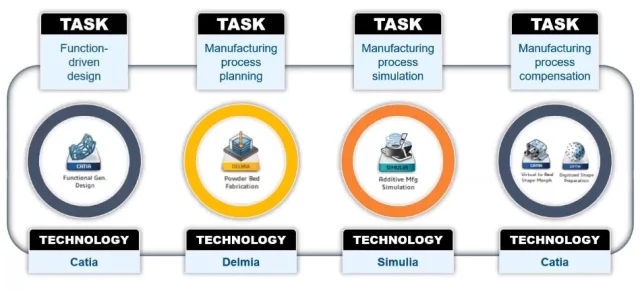
One possible AM workflow on 3DEXPERIENCE. (Image courtesy of Vias. Inc.)
So what sets Dassault Systèmes’ products apart from everyone else’s?
“Dassault Systèmes offers a single software environment,both on premise and cloud, that allows complete digital thread connecting design optimization, geometry reconstruction, to build planning, process simulation and post-processing and in-service simulations,” said Sett.
“Backed by its FEA solver Abaqus, Dassault Systèmes provides a customizable simulation framework to support any AM process type, including powder bed fabrication, direct energy deposition, material deposition, jet fusion and processes yet to be invented. Multiphysics modeling from thermal-mechanical, eigenstrain and microstructure process simulation, to heat treatment, support removal and in-service simulation are available to choose from for industry production or comprehensive research. Moreover, in-silico material design and engineering connect microscale phase field simulations to metallurgical phase transformation analyses and as-built material properties with full capability for constitutive modeling, contact, damage and fatigue modeling.”
And what does Dassault Systèmes have in the pipeline in terms of future innovations on its platform?
“Through innovative new products such as the 3DEXPERIENCE Marketplace, Dassault Systèmes is focused on streamlining on-demand additive manufacturing processes from 3D to real production parts, collaborating with leading digital manufacturers in record time,” said Sett.
“Marketplace PartSupply connects design environments with a supplier component catalog to selectively use the best fitting parts in the design stage; Marketplace Make checks manufacturability, replicability and qualification, and selects the right Industrial Manufacturing Service Bureaus from among the Dassault Systèmes Service Provider Ecosystem.”
On the topic of simulation accuracy and variance, Dassault Systèmes seems to have a firm grasp on the subject, and has won an award on that very theme.
“Rated best by NIST’s AM benchmark residual stress prediction, Dassault Systèmes’ AM simulation provides the most accurate simulation predictions comparing to NIST’s state-of-art physical prints and measurements (AM-Bench 2018 Benchmark Challenge Submissions and Awards). Dassault Systèmes microstructure modeling framework provides validated microstructure features prediction with mapping to macroscale mechanical properties such as Young’s modulus, yield stress, ultimate tensile stress.
Sources of variance come from simulation methods and assumptions, material data and modeling assumptions, simulation robustness, error in physical measurement and repeatability of the print process itself.”
![]() COMSOL
COMSOL
And last, but by no means least, we reach COMSOL.
COMSOL, being heavily involved in the realm of multiphysics simulation is well positioned to use its expertise for additive manufacturing simulation—the very nature of additive manufacturing spreads across multiple physical domains after all!
We chatted with Bjorn Sjodin, VP of Product Management at COMSOL, Inc, to see what the company has to offer.
“COMSOL’s customers are using a variety of products for 3D printing,” said Sjodin.
“The most common add-on products used in combination with COMSOL Multiphysics include the Structural Mechanics Module, the Nonlinear Structural Materials Module, and the Heat Transfer Module. Some customers also add electromagnetics and chemical analysis to their 3D printing simulations, which is covered by the AC/DC Module and the Chemical Reaction Engineering Module.
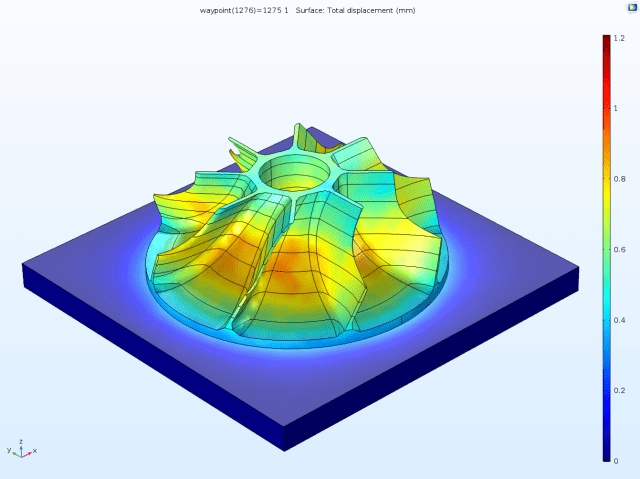
Displacement plot of impellor on build plate. (Image courtesy of COMSOL.)
“The Structural Mechanics Module can handle deposition of materials in a strain-free state by using a technique called material activation,” continued Sjodin.
“This module is typically used with the Heat Transfer Module for more advanced thermal analysis alongside material deposition. This technique is predominantly for metal printing but is occasionally used in plastic printing. The software has extremely powerful general-purpose tools for toolpath simulations needed by additive manufacturing processes. The same tools are also used in laser welding modeling.”
What sets the COMSOL Multiphysics platform apart from other competing products?
“COMSOL Multiphysics is unique in that our products serve as a toolbox for exploring all aspects of the printing process,” said Sjodin.
“We have customers that are developing additive manufacturing equipment and are reliant on our tools for further developing their printing methodology. They use it to better understand the physical phenomena behind their proprietary additive manufacturing process as well as for coming up with ideas of how to change the physical process so as to enhance the performance.
“Due to the wide multiphysics capability of our product suite, customers can experiment with various physical processes such as augmenting their process with electromagnetic or even acoustic fields—for example, by adding magnetic fields using coils that can be beneficial for the quality of the end product.”
Being the multiphysics specialists that they are, COMSOL is planning to continue adding new dimensions to its simulation products.
“We are always looking for ways to make it easier to integrate various physical phenomena into the modeling and simulation of additive manufacturing. It can be a very complex process, and I think we will see more multiphysics modeling in additive manufacturing going forward.”
So, exactly how accurate are the COMSOL simulations compared to real life?
“It is hard to get the same level of accuracy as in traditional mechanical analysis,” said Sjodin.
“The lack of knowledge of material properties is a common issue. However, accurately combining the effects of structural, thermal, phase change and chemical processes, we are able to see improved results.”
Regarding the source of variance between the simulation and final printed part, COMSOL has some different insights of its own.
“When it comes to something as seemingly straightforward as the addition of material, the process needs to be discretized, or digitized, in some way,” explained Sjodin.
“The process is divided up into manageable subtasks. The more subtasks, the greater the accuracy—however, the longer the simulation time. This type of trade-off is a major source of variance between simulation and real life. Other sources of errors can include the lack of material property knowledge as well as the lack of understanding of all the physical phenomena that actually take place in an additive manufacturing process.”
Source:engineering.com

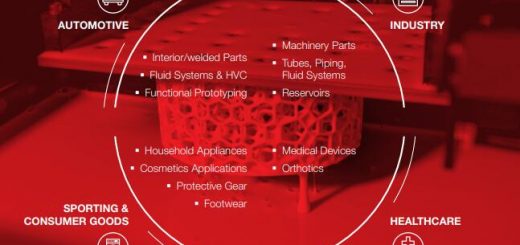
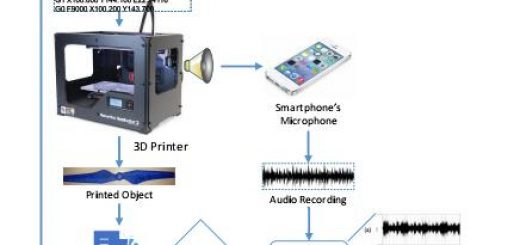
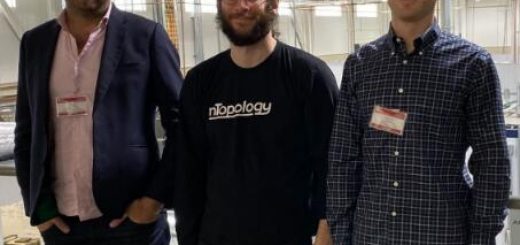
Recent Comments